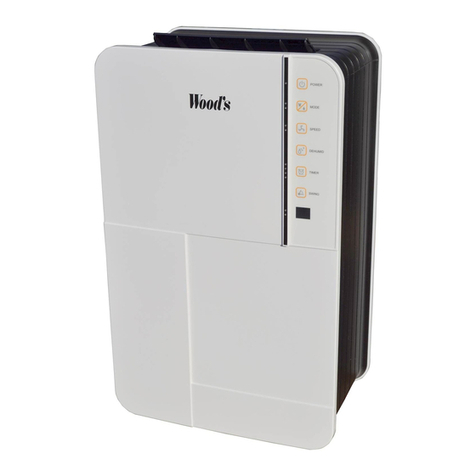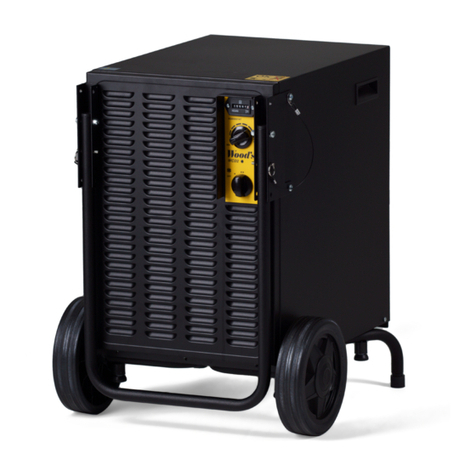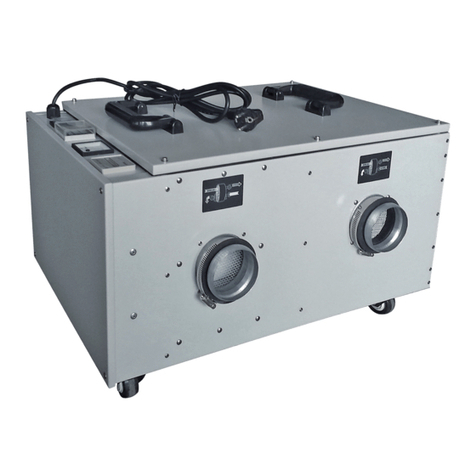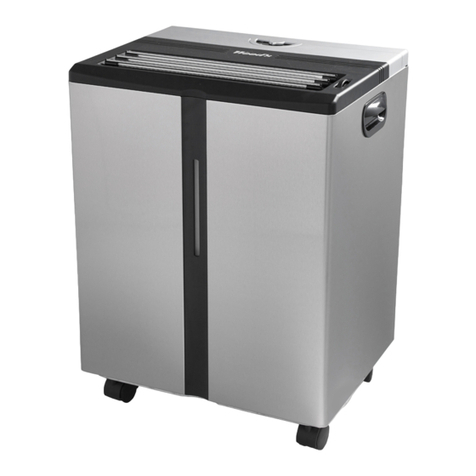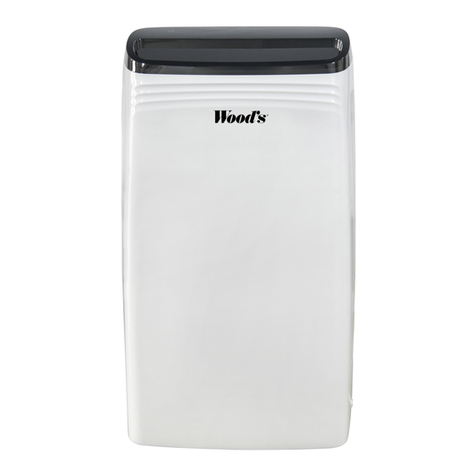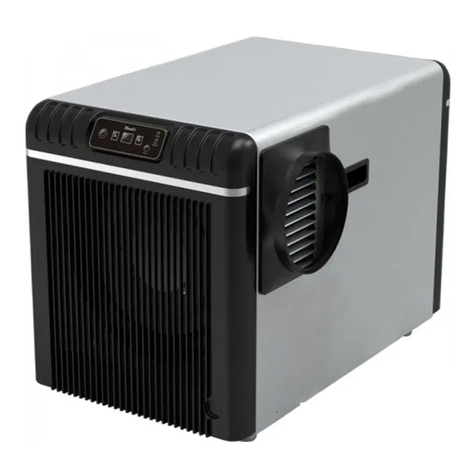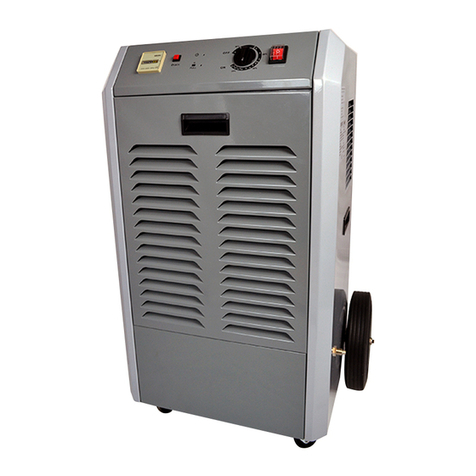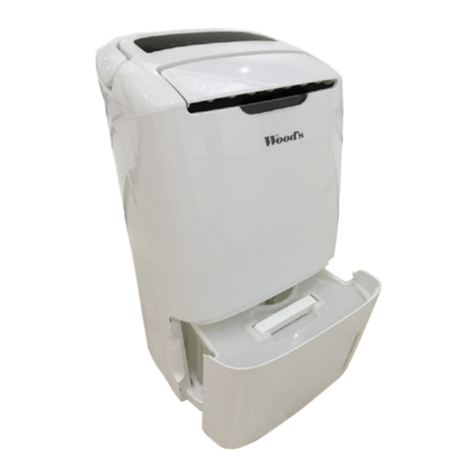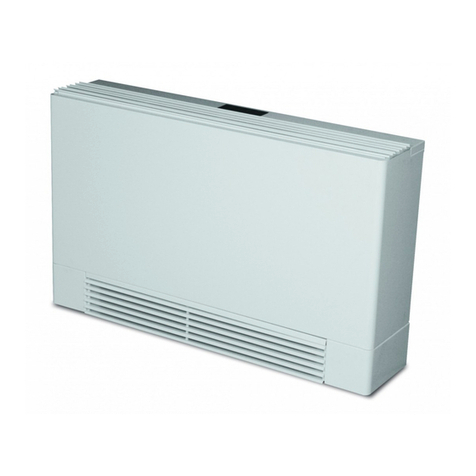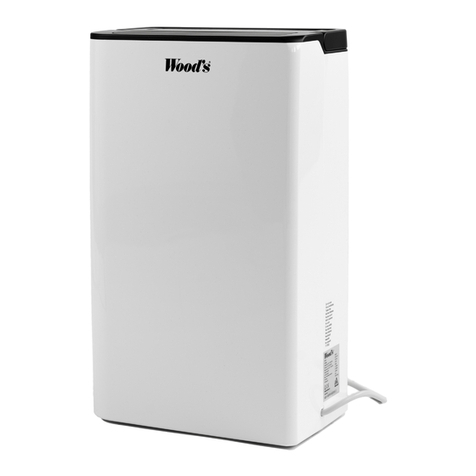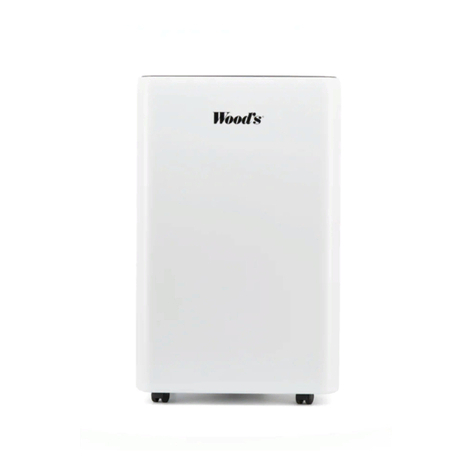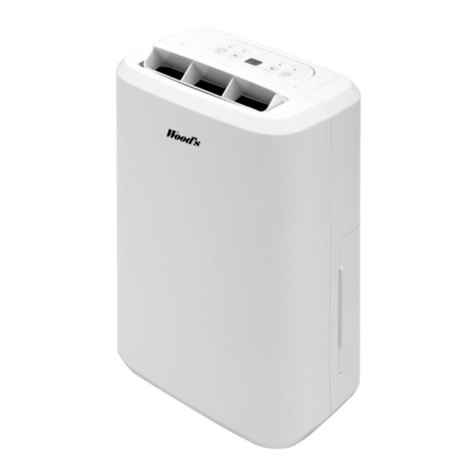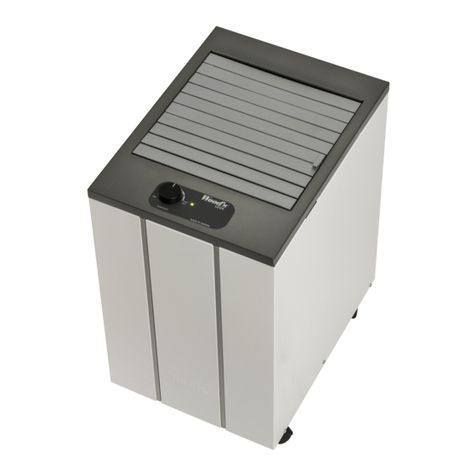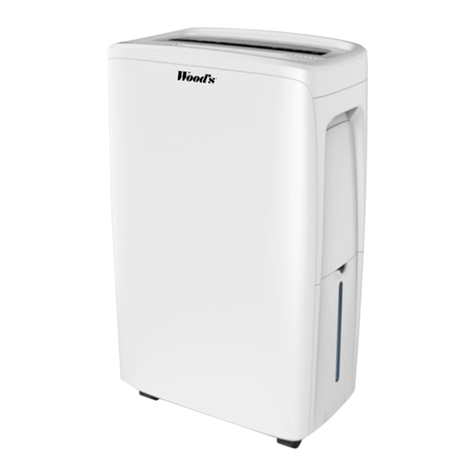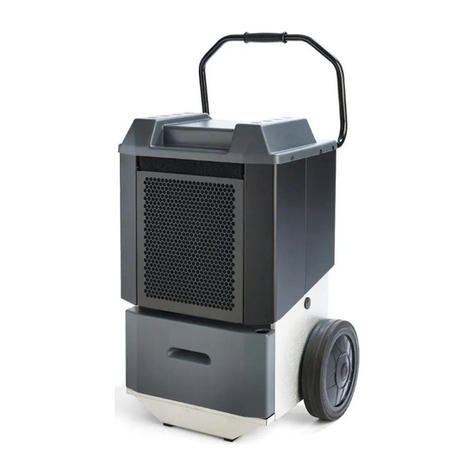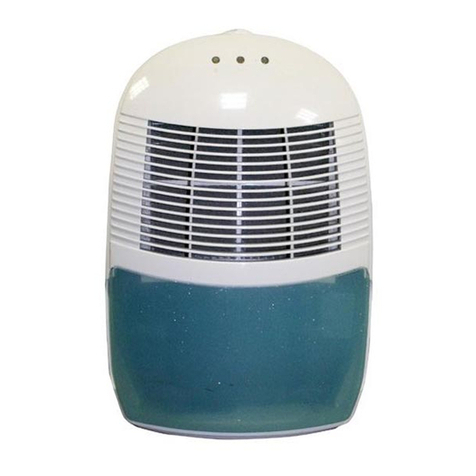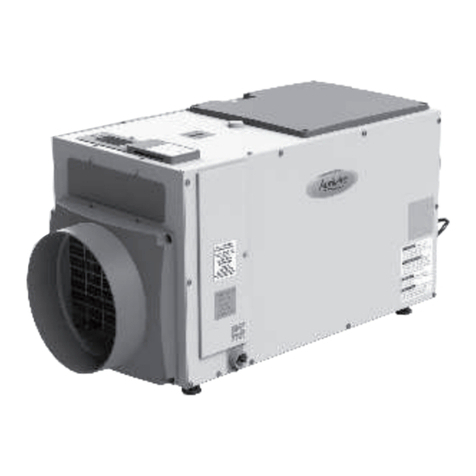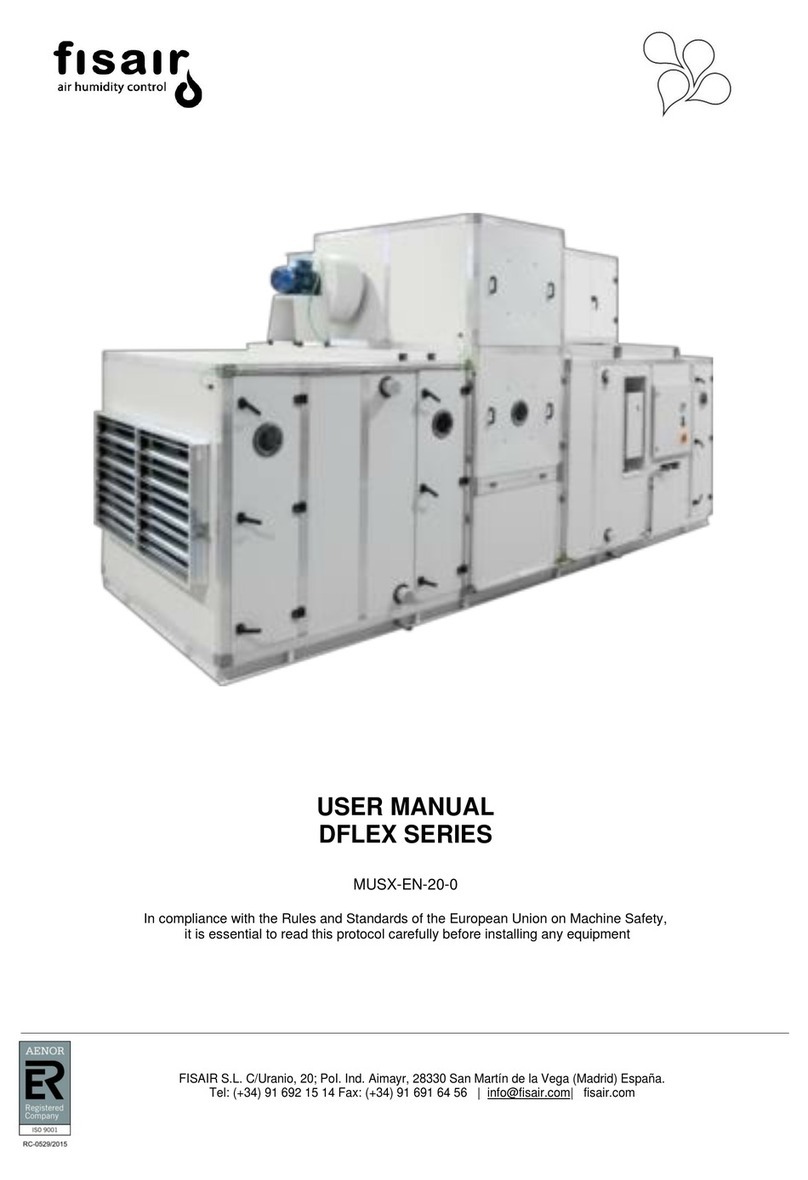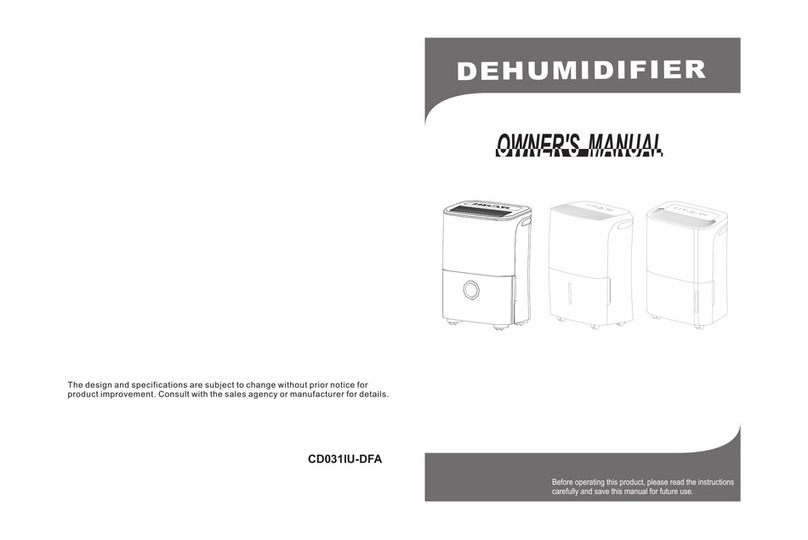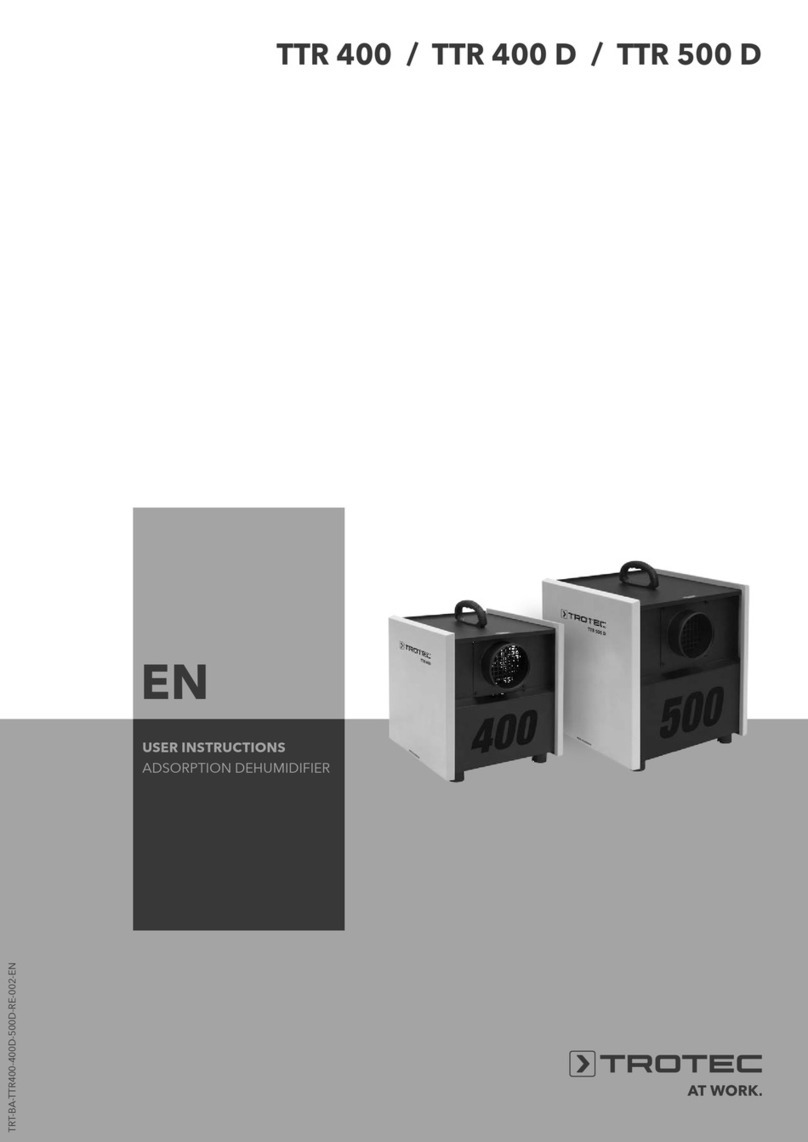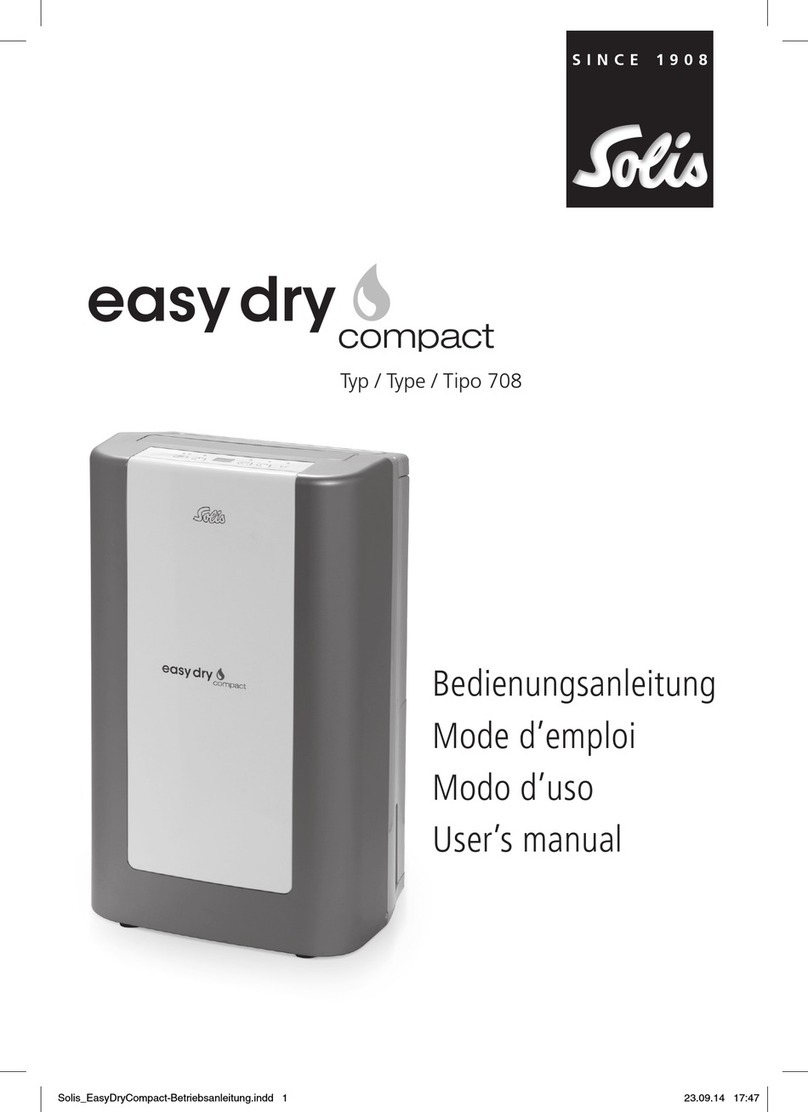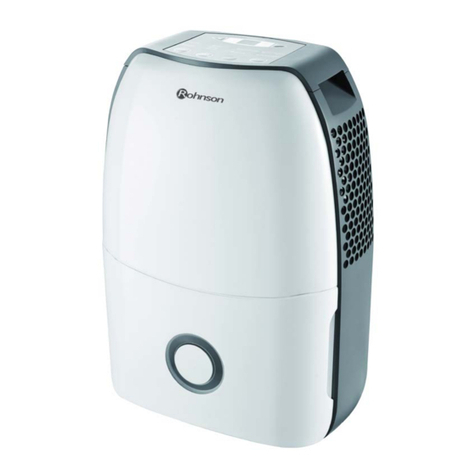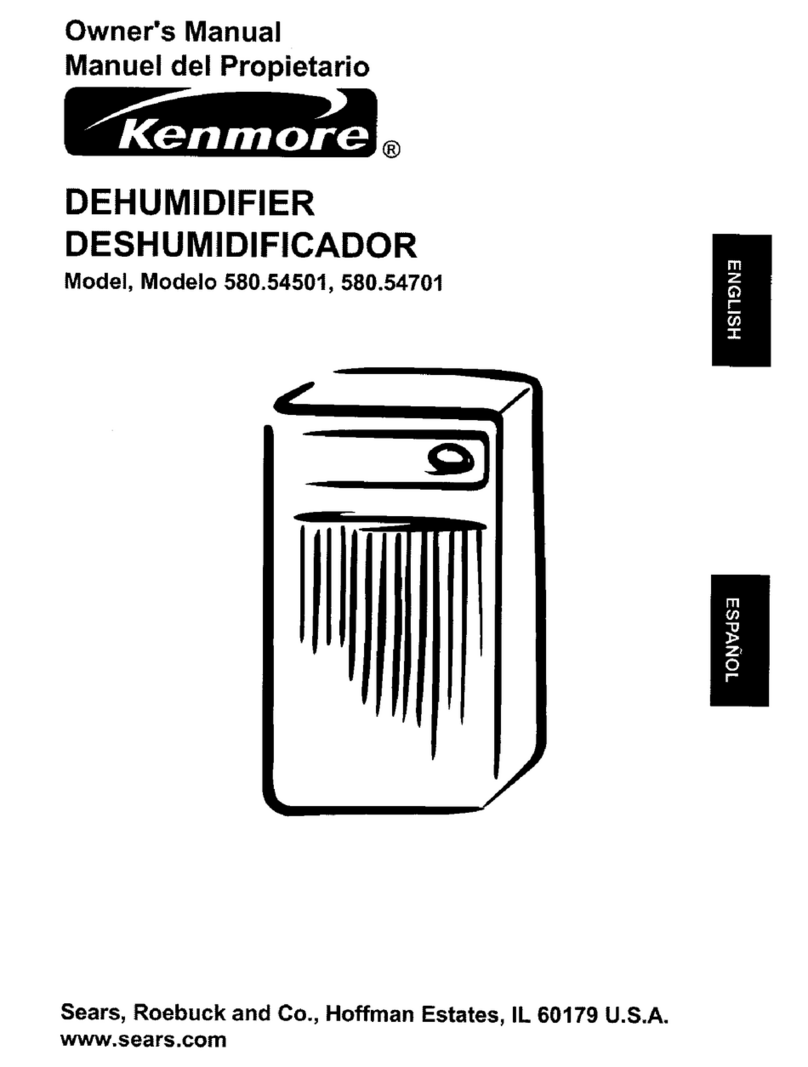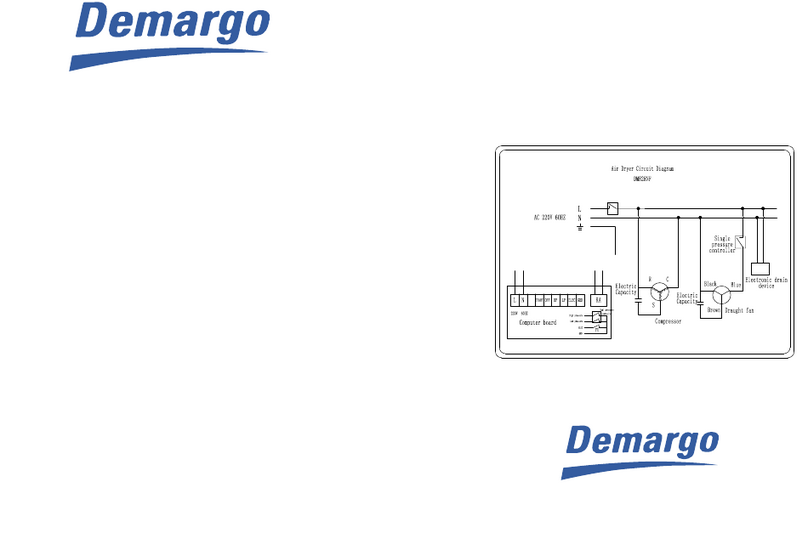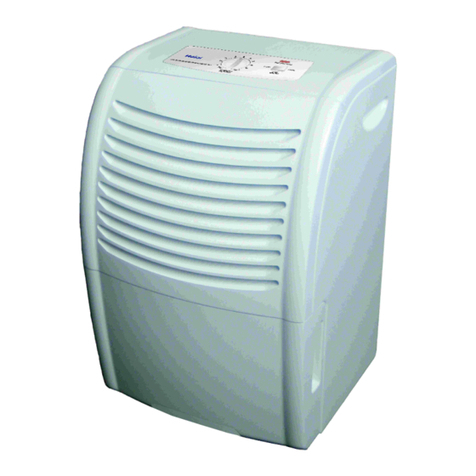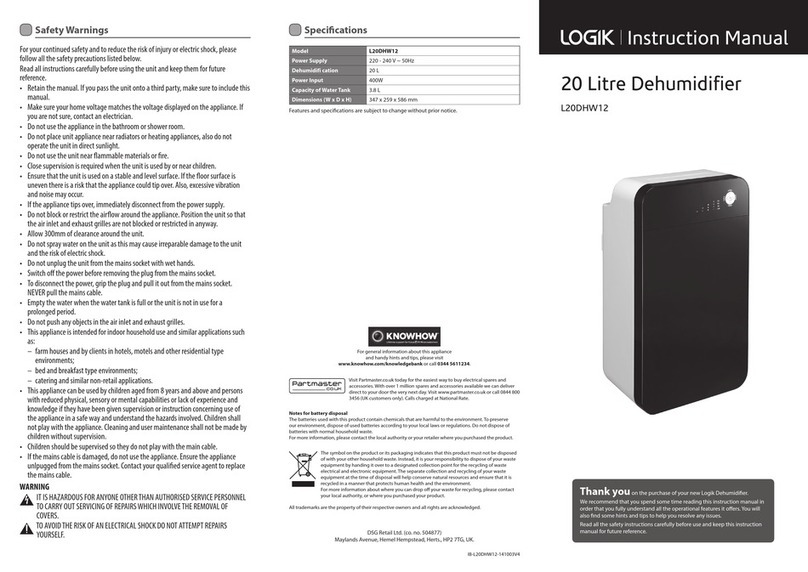Operating instructions
GB
WOOD’S - THE WORLD’S LEADING DEHUMIDIFIERS
Wood’s dehumidiers have been known as market leaders for many years. Wood’s dehumidiers are suitable
for use in the most demanding climates, and have high dehumidifying capacity even at lower temperatures and
humidity levels. They are used with good results in premises that become damp such as cellars, crawl spaces,
garages or summer-houses. They are also excellent for drying washing, attics, pool rooms and laundry, being
ecient and low on energy consumption. Wood’s dehumidiers will dry your clothes eciently without wear.
The amount of humidity that the dehumidier removes depends on temperature, humidity level and placement.
External weather conditions may also aect the performance of the dehumidier. In cold weather the actual
humidity, (in grams per cubic meter air) decreases and thus the extraction of humidity from the air by the de-
humidier is reduced. Therefore the dehumidier is suitable for use in the temperature range +0˚C to +35˚C.
Wood’s dehumidiers are safe in operation and intended for continuous use over many years.
EXCESSIVE AIR HUMIDITY - A DANGER
Condensation occurs when water vapour in the air comes into contact with a cold roof, window or wall. When
water vapour is cooled down, condensation occurs, and water-drops are formed. In high air humidity, the air
may get musty and mould is formed, causing damage to a house and its furnishings. This environment may
even cause illness for the residents, since mites and other creatures thrive in a damp environment. A dehumid-
ier with high performance creates a good, healthy humidity level, and for greatest eciency the doors and
windows of rooms that are being dehumidied should be kept closed. Wood’s dehumidiers remove odours,
dries wood and clothing. A dehumidier may be used in cellars, washrooms, garages, crawl spaces, caravans,
summer-houses and on boats.
PLACEMENT OF YOUR DEHUMIDIFIER
Wood’s dehumidiers are easy to move around, all you need to have is a power source for 220/240V, but bear in mind
the following:
- The dehumidier should not be placed near radiators or other heat sources or exposed to direct sunlight, as it will
reduce performance.
- It is benecial to use a radiator or heating fan to keep the temperature above +5˚C to increase the capacity.
- The dehumidier should stand at least 25cm from a wall or other obstruction, for maximum air ow.
- Ideal is to put it in the centre of the room / area.
HINTS:
- When the dehumidier is used in extremely damp or very cold environments the dehumidier may stop working as a
large amount of ice builds up on the cooling coil. Turn o the dehumidier and place it a little above oor level so that
the ice will melt away.
- For maximum dehumidifying power in a room, it is recommended that the air supply from outside and from adjoin-
ing rooms is minimized – close doors and ventilators.
- Increase temp. for faster dehumidication ( warm air carries more water.)
- Expect higher dehumidication during the autumn and summer as the outside air is warm and humid.
- If the power is stopped suddenly, the machine will remain shut o for 3 minutes before restarting automatically when
the power returns.

